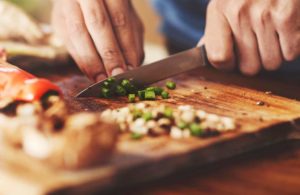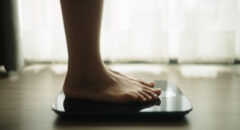
While what we eat is extremely important when it comes to losing weight. When and where we eat can make just as much a difference. Here are the ten simple healthy eating habits that can help you shred inches FAST!
1. What to eat - No magic food causes weight loss and no food is inherently fattening. Eat a variety of foods from meat, legumes, dairy, grains, fruits, vegetables, and a small amount of fat daily.
Vegetables and fruits are a great source of vitamins and minerals. Carbohydrates in fruits, milk, grains, and legumes will give you quick energy for the first 2 hours while the protein in milk, meat, and legumes will keep you satisfied for 4 hours.
The fat in meat and milk as well as a fat added to foods will keep you satisfied for 6 hours.
2. Where to eat - Eliminate eating in the car, bus, train, walking, standing, or on the phone. Make time to eat meals and snacks by sitting down at a table. People that eat on the go tend to eat more and more of the wrong things. It's just like the age-old saying, "if you fail to plan, then you plan to fail."
3. When to eat - Eat breakfast and two other meals each day. People who eat breakfast are less likely to snack in the evening. Eat at least every 4 to 6 hours when awake rather than waiting until your stomach starts growling.
4. How much to eat - Calories count. Choose smaller portion sizes. Forget those supersizes as they are expensive to your waistline.
5. Shopping & eating out - If you don't buy it or make it, food has a hard time finding its way into your mouth. Shop from a grocery list and after a meal when you are not hungry to limit impulse buying.
In restaurants, if you aren't sure how a food is prepared ask. When your food is served, divide off what you are going to eat and...
...take the rest home for the next meal. Just because food is presented to you at a buffet doesn't mean you have to eat or sample everything just because it is included in the price of a meal. Make food and portion sizes before you start eating.
6. Record your eating - Keep a written record of what you eat or drink, when, and where to see what triggers your eating. Do you eat when you are tired, bored, or upset?
7. Weigh in - Weigh yourself daily and record it. It helps keep track of your weight so that when your weight varies by more than 5 pounds you can make small eating and exercise changes before 5 pounds turns into 10 or more.
8. Pay attention & slow down - Don't get distracted by multitasking while eating. Activities like watching TV or reading takes your focus off how much you are eating and your sense of fullness.
Stop when you pause while eating or sense that you are full no matter how much food is left on your plate. Eat slower and drink water with a meal.
Food takes 20 minutes for a message to get from your stomach to your brain that you are full so meals should take at least 20 minutes and preferably longer.
Chew each mouthful thoroughly. If you eat food that isn't on your plan, don't get down on yourself. Get immediately back on your plan rather than waiting for the next day or New Years to start again.
9. Get moving - Take a look at your daily schedule and figure out how you can walk, bike, or run more. Get 30 - 60 minutes of exercise each day and wear a pedometer to keep track. Aim for 10,000 steps a day.
10. Drink water - Drink enough water so that your urine is colorless and odorless during the day. People who drink sufficient water are more likely to lose weight.








